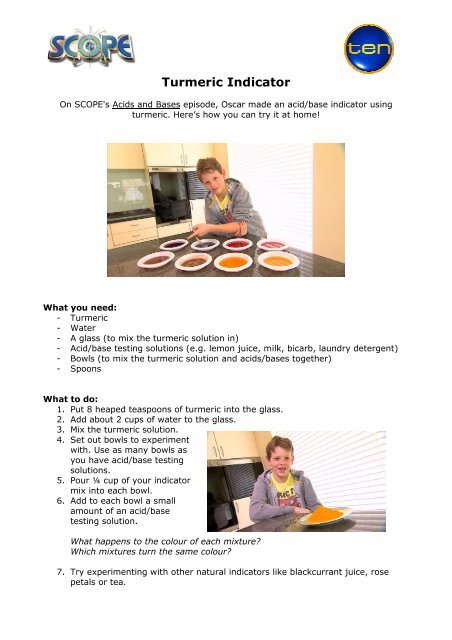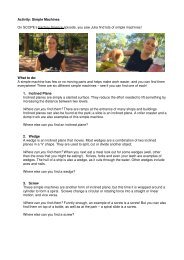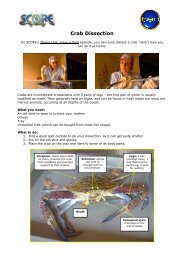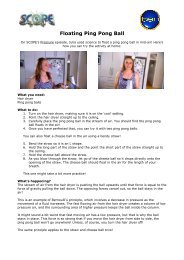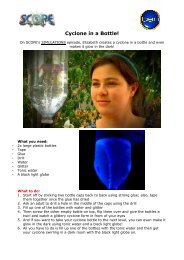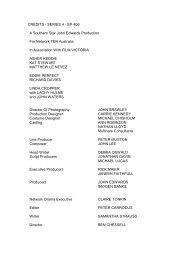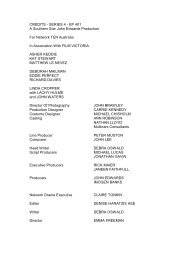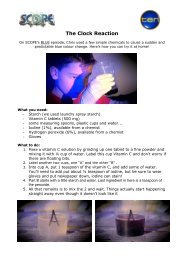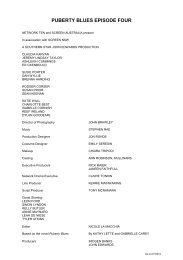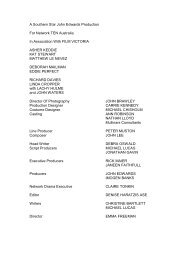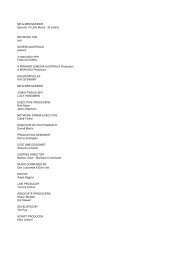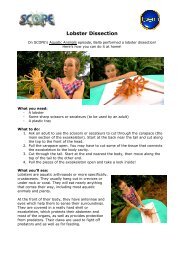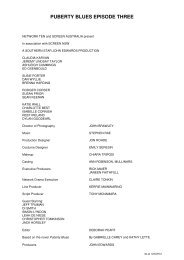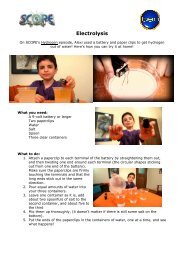Create successful ePaper yourself
Turn your PDF publications into a flip-book with our unique Google optimized e-Paper software.
<strong>Turmeric</strong> <strong>Indicator</strong><br />
On SCOPE's Acids and Bases episode, Oscar made an acid/base indicator using<br />
turmeric. Here’s how you can try it at home!<br />
What you need:<br />
- <strong>Turmeric</strong><br />
- Water<br />
- A glass (to mix the turmeric solution in)<br />
- Acid/base testing solutions (e.g. lemon juice, milk, bicarb, laundry detergent)<br />
- Bowls (to mix the turmeric solution and acids/bases together)<br />
- Spoons<br />
What to do:<br />
1. Put 8 heaped teaspoons of turmeric into the glass.<br />
2. Add about 2 cups of water to the glass.<br />
3. Mix the turmeric solution.<br />
4. Set out bowls to experiment<br />
with. Use as many bowls as<br />
you have acid/base testing<br />
solutions.<br />
5. Pour ¼ cup of your indicator<br />
mix into each bowl.<br />
6. Add to each bowl a small<br />
amount of an acid/base<br />
testing solution.<br />
What happens to the colour of each mixture?<br />
Which mixtures turn the same colour?<br />
7. Try experimenting with other natural indicators like blackcurrant juice, rose<br />
petals or tea.
What’s happening:<br />
When Oscar tried this at home, the indicator stayed yellow when the lemon juice and<br />
milk were added to it, but it turned red with the bicarb of soda and the laundry<br />
detergent. That’s because turmeric contains a yellow pigment called curcumin, which<br />
is pH sensitive. Its molecules change shape in solutions of different pH. They are<br />
yellow in solutions that are acidic, like lemon juice and milk, but they turn dark red in<br />
solutions that are basic like biarb of soda and laundry detergent.


